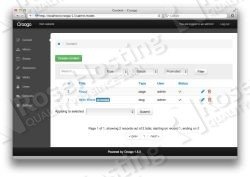

To connect to your server, you’ll need some kind of an SSH client.

We recommend a GoDaddy Virtual Private Server if you’re just getting started, or a full dedicated server if you’re ready to take total control. To set this up, you’ll need a live Linux server (that you can tweak) with a dedicated IP address and a way to connect to it. It’s important to note that you also have to install VirtualBox at the same time, as its core functionality is built into the main Vagrant product. Vagrant dramatically reduces the amount of time that you need to spend rebuilding your operating system and acts as a central configuration hub for your activities, allowing you to easily manage and deploy VDEs using the same basic configuration. Did you mean to use "continue 2"? occurs during installation, access here to fix it.Vagrant is a tool in the Ubuntu Linux environment for setting up a complete virtual development environment, also commonly referred to as a VDE. In PHP 7.2+, if the error Warning: "continue" targeting switch is equivalent to "break".If the error proc_open(): fork failed errors occurs during installation, access here to fix it.index_key (null): Fill in with the index key for database encryption (click here to generate the index key).private_key (null): Fill in with the private key for database encryption (click here to generate the private key).



 0 kommentar(er)
0 kommentar(er)
